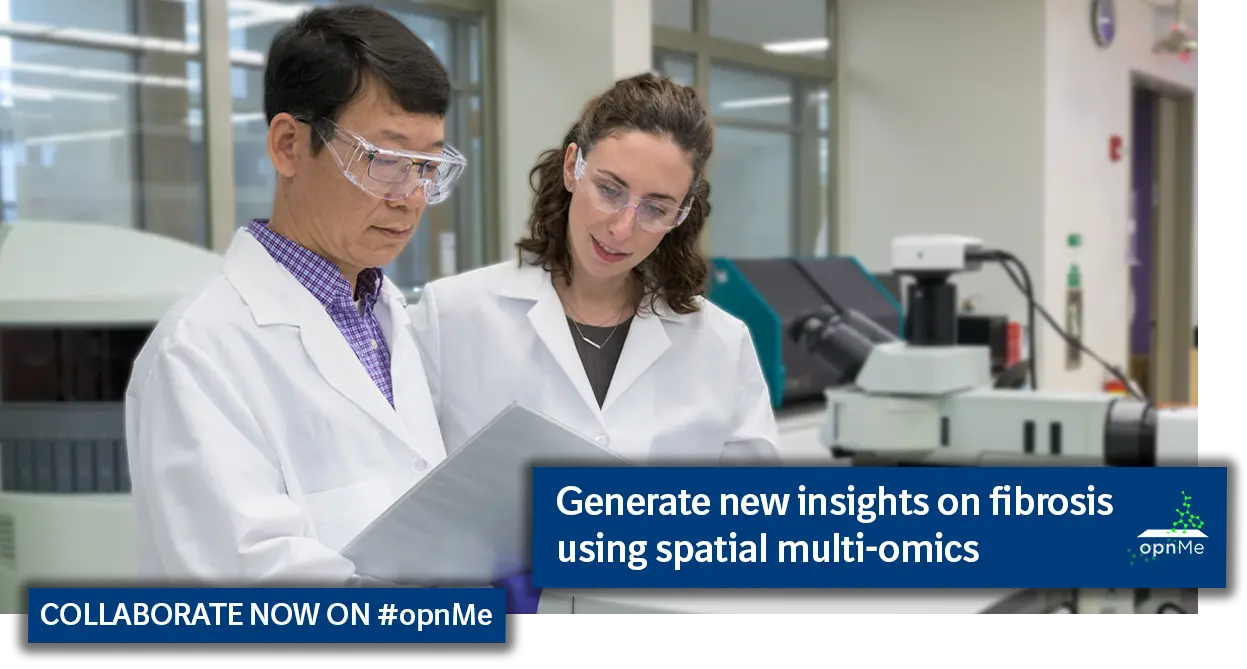Now inviting: Leverage spatial multi-omics profiling to characterize fibrotic disease mechanisms
18 March 2024
Fibrosis is a pathological feature of many human inflammatory diseases such as pulmonary fibrosis, Crohn’s disease, scleroderma, metabolic-associated steatohepatitis, chronic kidney diseases as well as cancer. Complex multi-dimensional processes have been identified as drivers of these diseases including stromal cell activations, inflammation, senescence, cell-cell interactions, transcriptional, and epigenetic regulations. Understanding the spatial context of tissue neighborhoods, microenvironments, and the fibrotic niche will be essential to decipher fibrotic disease mechanisms. Hence, the integration of spatial multi-omics information like RNA sequencies, epigenome profiles, chromatin accessibility, and protein expression from the same tissue section bears the hope to provide new answers how fibrotic diseases could become addressed.
With our latest opn2EXPERTS call we invite you to answer the following question:
How would you propose to leverage novel spatial multi-omics to investigate molecular and cellular mechanisms driving human fibrotic disease suitable for computational analyses?
We aim to identify and invite research collaborators with shared interests in fibrosis and expertise in spatial multi-omics method development, including both data generation and computational pipeline development. If your project is selected, you will have the opportunity to directly collaborate with the Global Computational Biology and Data Science team of Boehringer Ingelheim with extensive experience in spatial multi-omics data analysis. In addition, you can expect up to 500,000 euros in research funding for the computational integration of multi-omics data layers to improve fibrotic disease understanding.
Apply soon as your proposals can only be accepted if they arrive by May 15, 2024, 11:59 pm PST.
No registration required
Subscribe to our newsletter to stay updated as we add new molecules to opnMe.com.
About our opn2EXPERTS question:
How would you propose to leverage novel spatial multi-omics to investigate molecular and cellular mechanisms driving human fibrotic disease suitable for computational analyses? With ambitious questions such as this, we share precisely formulated biological questions with the scientific community as part of our opn2EXPERTS program. By sharing our questions from the biology field, we intend to explore novel solutions for discovery research that will benefit the needs of patients.
About opnMe:
opnMe.com, the open innovation portal of Boehringer Ingelheim, aims to accelerate research initiatives to enable new insights of disease biology in areas of high unmet medical need by sharing well-characterized molecules and offer collaborations for science. In the spirit of collaboration, our molecules are provided to the scientific community to help unlock and fulfill their full potential. These molecules are either freely available as “Molecules to Order” or applied via scientific research submissions as “Molecules for Collaboration”. Interested scientists are invited to submit testable research hypotheses with these assets in novel diseases or combinations. With our “opn2EXPERTS” program, we enlist advice on key scientific issues to fuel further drug discovery and deliver novel solutions that benefit unmet patient needs, such as our recent call on “the roles of AGR2 in pulmonary fibrosis”.



